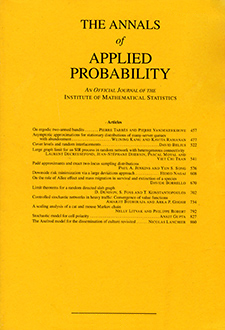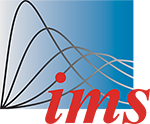Abstract
Consider a large uniformly mixing dynamic population, which has constant birth rate and exponentially distributed lifetimes, with mean population size
Citation
Frank Ball. Tom Britton. Pieter Trapman. "An epidemic in a dynamic population with importation of infectives." Ann. Appl. Probab. 27 (1) 242 - 274, February 2017. https://doi.org/10.1214/16-AAP1203
Information





